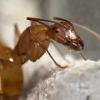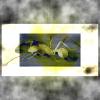Hello
i have a 1 year old camponotus chromaiodes colony. They’ve been growing and doing well. Recently I had to remove the heating cable since they were moving to the outworld with everything I’m guessing because it was too hot. So recently I have noticed they were eating their brood. At one point I even saw the queen sharing a brood with 2 workers. I placed food for them, meal worm, crickets, even roaches. They don’t touch it. They haven’t ate any of it. And I spaced all this feeding out I didn’t give it to them all at once. The roaches I gave them last night, this morning I checked and it was in their trash pile. I noticed more brood spread out throughout the nest, some in pieces some in trash pile. One worker was eating one. Their brood is almost gone. Anyway, can anyone help me out I don’t know what is going on.















